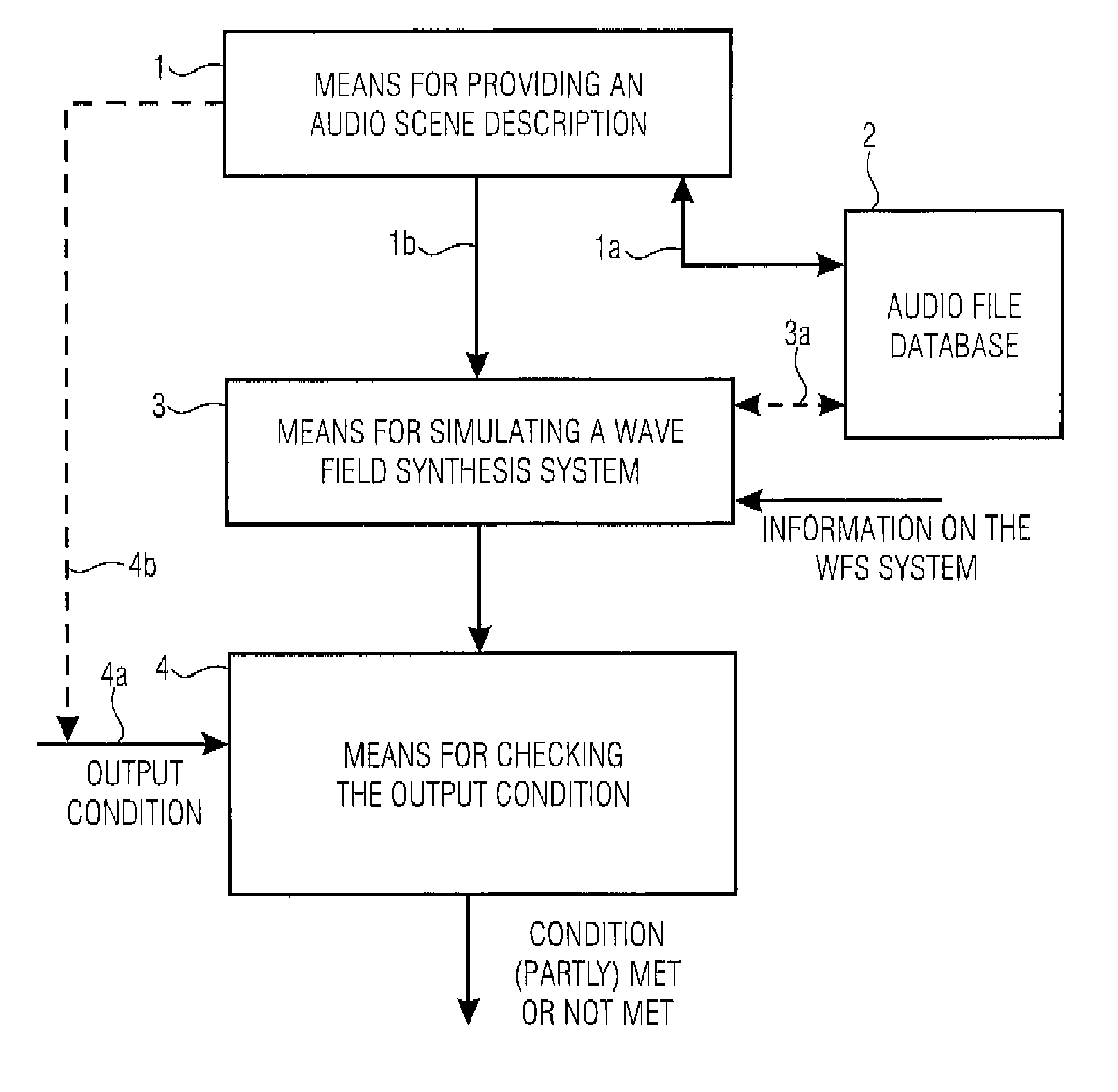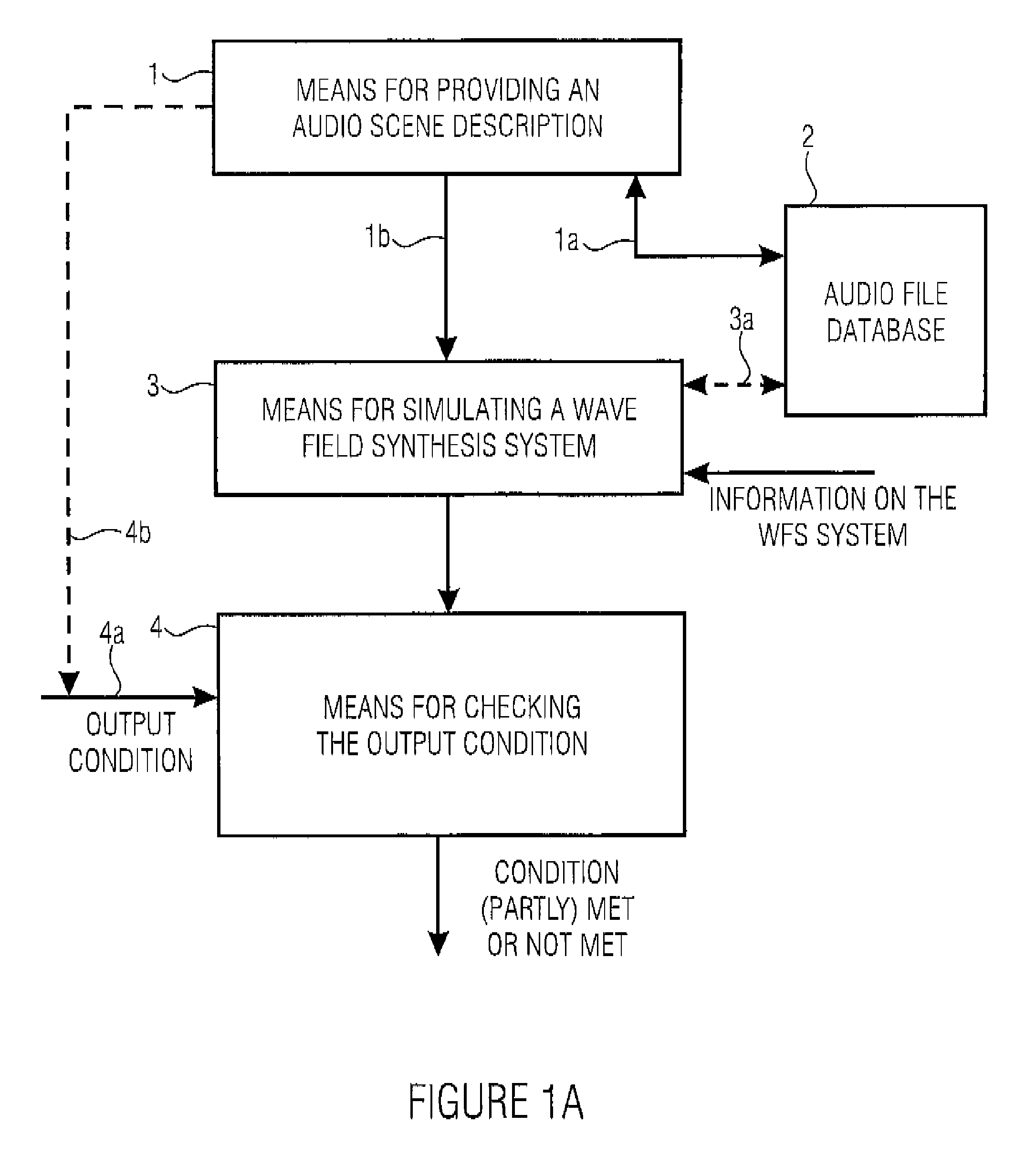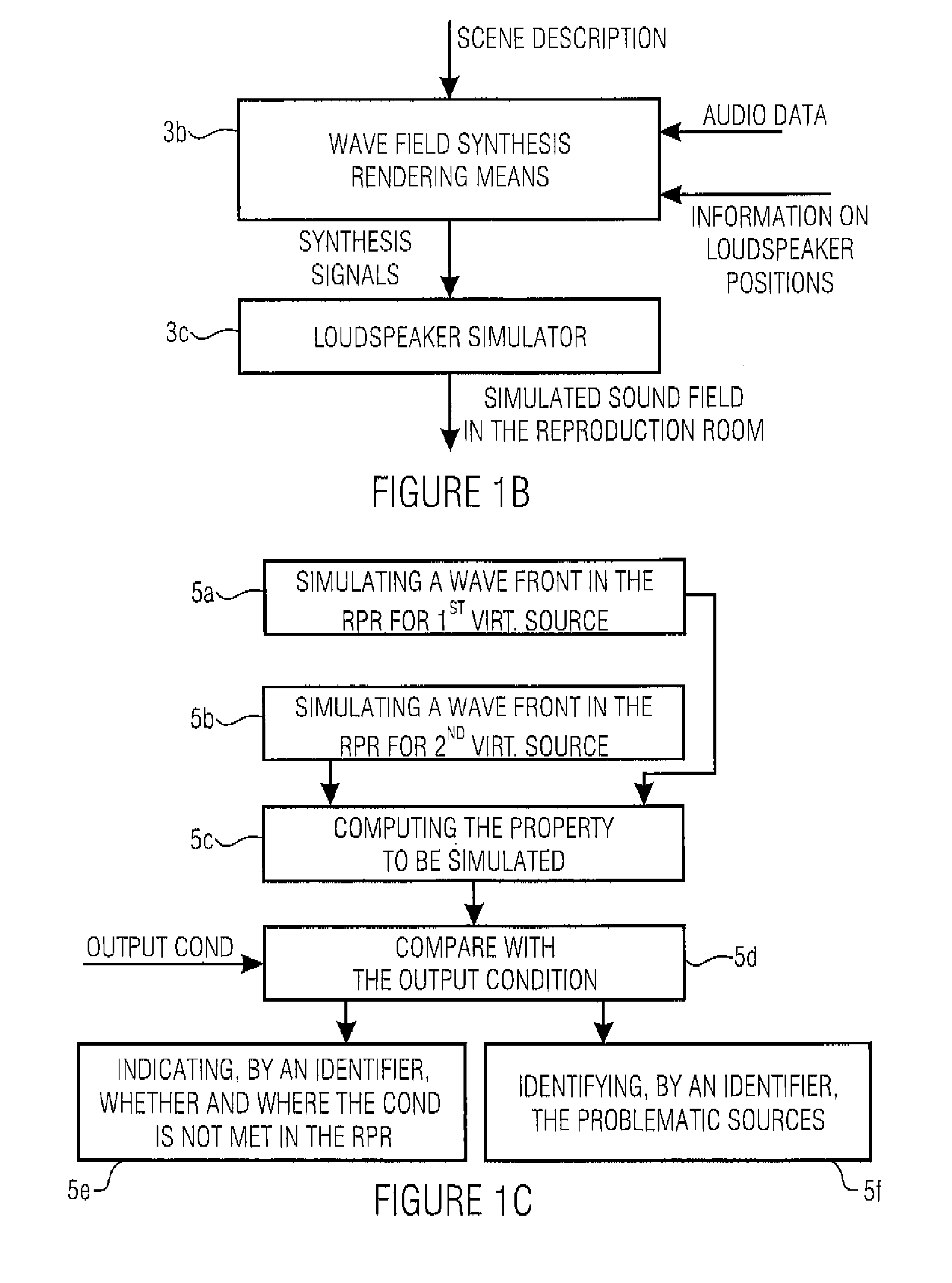Apparatus and method for simulating a wave field synthesis system
a wave field synthesis and apparatus technology, applied in the field of wave field synthesis technique, can solve the problems of affecting the quality of spatial sound reproduction of natural, but also virtual environments, and wave field synthesis has only rarely been used in the field of wave field synthesis
- Summary
- Abstract
- Description
- Claims
- Application Information
AI Technical Summary
Benefits of technology
Problems solved by technology
Method used
Image
Examples
Embodiment Construction
[0065]FIG. 1A shows a schematic illustration of an inventive apparatus for simulating a wave field synthesis system with a reproduction room in which one or more loudspeaker arrays and a wave field synthesis rendering means coupled to the loudspeaker array can be attached. The inventive apparatus includes a means 1 for providing an audio scene description defining a temporal sequence of audio objects, wherein an audio object comprises an audio file for a virtual source or a reference to the audio file and information on a source position of the virtual source. The audio files may either be directly contained in the audio scene description 1 or may be identifiable by references to audio files in an audio file database 2 and be supplied to a means 3 for simulating the behavior of the wave field synthesis system.
[0066]Depending on the implementation, the audio files are controlled via a control line 1a or supplied to the simulation means 2 via a line 1b, in which also the source positi...
PUM
 Login to View More
Login to View More Abstract
Description
Claims
Application Information
 Login to View More
Login to View More - R&D
- Intellectual Property
- Life Sciences
- Materials
- Tech Scout
- Unparalleled Data Quality
- Higher Quality Content
- 60% Fewer Hallucinations
Browse by: Latest US Patents, China's latest patents, Technical Efficacy Thesaurus, Application Domain, Technology Topic, Popular Technical Reports.
© 2025 PatSnap. All rights reserved.Legal|Privacy policy|Modern Slavery Act Transparency Statement|Sitemap|About US| Contact US: help@patsnap.com



